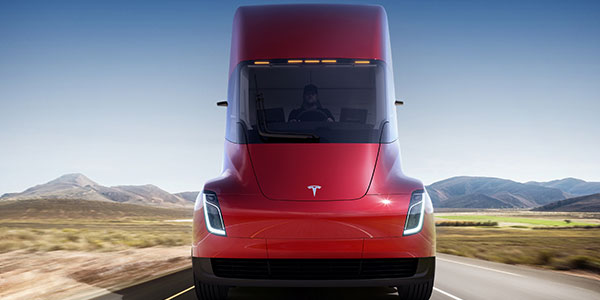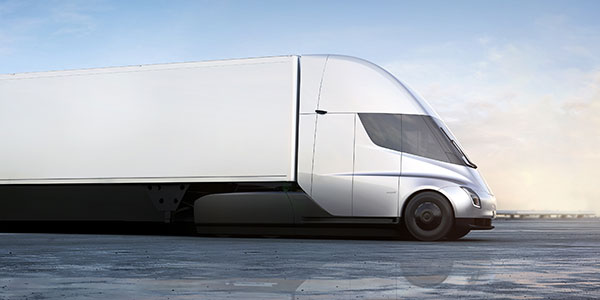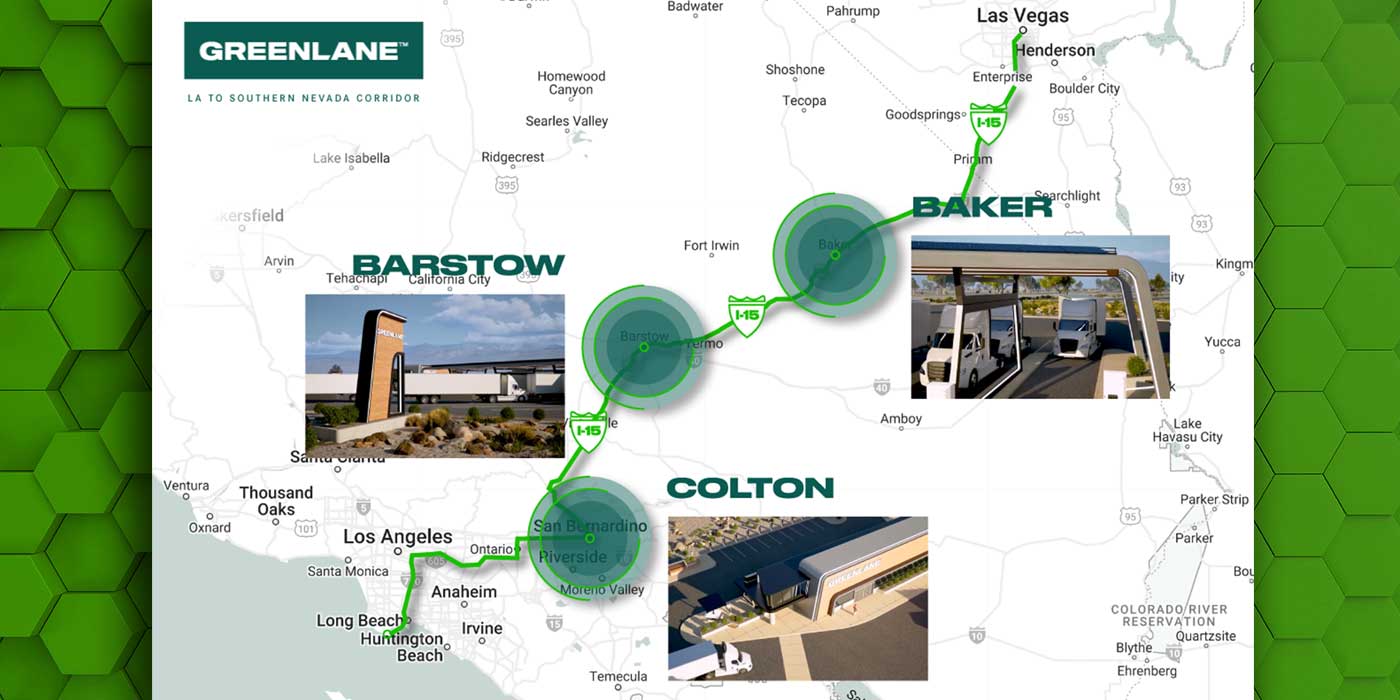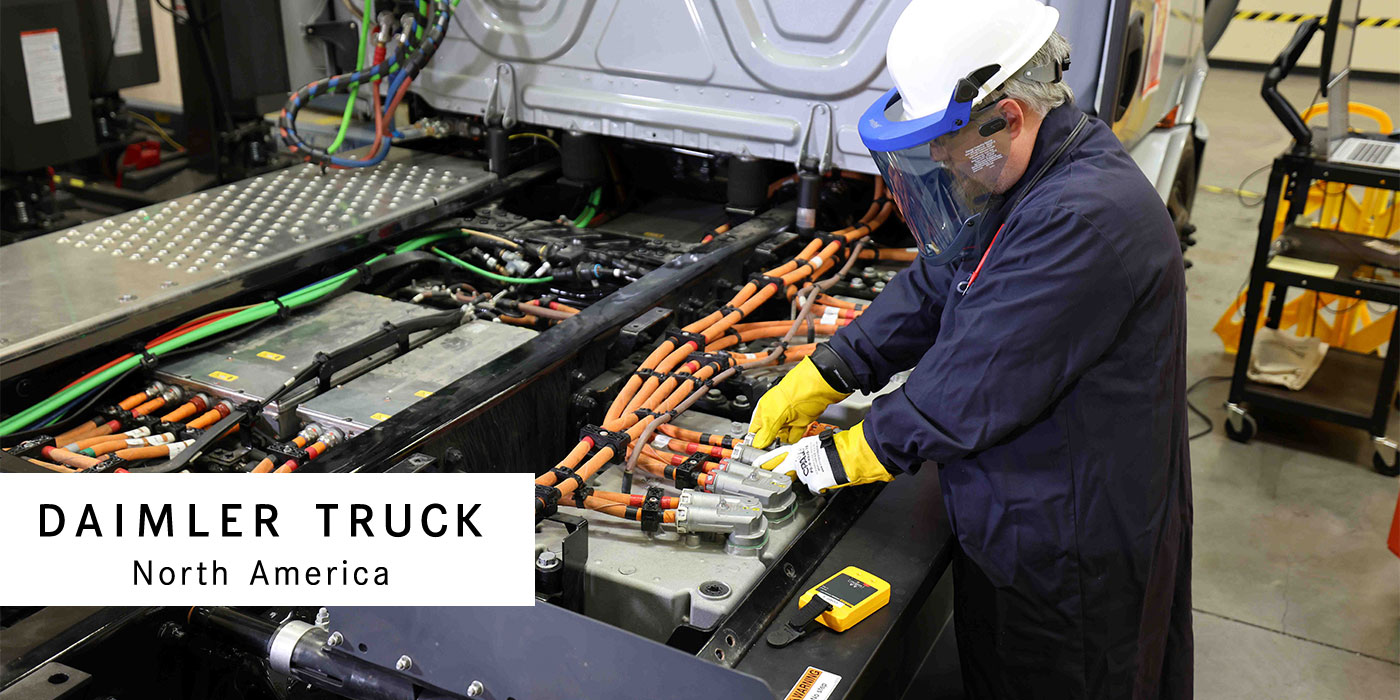After much speculation and hype, Tesla unveiled its electric Class 8 truck, dubbed the Semi. Fully loaded, the Tesla Semi consumes less than two kilowatt-hours of energy per mile and is capable of 500 miles of range at GVW and highway speed, accommodating a wide range of shipping applications given that nearly 80% of freight in the U.S. is moved less than 250 miles, according to the company. Without a trailer, the Tesla Semi achieves 0-60 MPH in five seconds, and it does 0-60 MPH in 20 seconds with a full 80,000-lb. load. Additionally, Tesla reports that the Semi climbs 5% grades at a steady 65 MPH. The Tesla Semi requires no shifting or clutching for smooth acceleration and deceleration, and its regenerative braking recovers 98% of kinetic energy to the battery, giving it a basically infinite brake life.
In regard to charging, Megachargers—a new high-speed DC charging solution—will add about 400 miles in 30 minutes and can be installed at origin or destination points and along heavily trafficked routes, enabling recharging during loading, unloading, and driver breaks, according to Tesla.
The Tesla Semi’s all-electric architecture is designed to have high safety standards, with a reinforced battery that shields the Semi from impact and gives it a low center of gravity. Its windshield is made of impact resistant glass and jackknifing is prevented due to the Semi’s onboard sensors that detect instability and react with positive or negative torque to each wheel while independently actuating all brakes, Tesla explained. The surround cameras aid object detection and minimize blind spots, automatically alerting the driver to safety hazards and obstacles. With Enhanced Autopilot, the Tesla Semi features Automatic Emergency Braking, Automatic Lane Keeping, Lane Departure Warning, and event recording. The company also reported that the Tesla Semi can also travel in a convoy, where one or several Semi trucks will be able to autonomously follow a lead Semi.
Tesla took note of driver comfort as well—the Semi’s cabin features unobstructed stairs for easier entry and exit, full standing room inside and a centered driver position for optimal visibility. Two touchscreen displays positioned symmetrically on both sides of the driver provide easy access to navigation, blind spot monitoring and electronic data logging. Built-in connectivity integrates directly with a fleet’s management system to support routing and scheduling, and remote monitoring.
Tesla also touted that the truck reportedly requires less maintenance compared to a diesel truck due to far fewer moving parts—no engine, transmission, after-treatment system or differentials to upkeep. Its battery is similar in composition to the batteries of Tesla energy products and is designed to support repeated charging cycles for over a million miles, while its motors are derived from the motors used in Model 3 and have been validated to last more than one million miles under the most demanding conditions.
Coupled with the low and stable nature of electricity prices–which average $0.12/kWh in the U.S. and can be significantly less for commercial and industrial users, falling to almost nothing when combined with local solar generation and storage–owners can expect to gain $200,000 or more in savings over a million miles based on fuel costs alone, Tesla said.
Reservations for the Tesla Semi can be made for $5,000 USD per truck. Production in 2019.
















